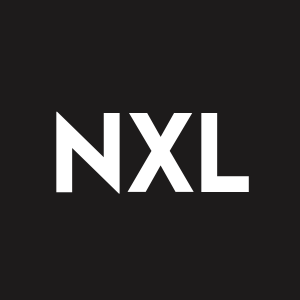Nexalin’s DIFS™ Neurostimulation Shows Cognitive and Brain Network Improvements in Alzheimer’s and Dementia Across Three Peer-Reviewed Studies
Rhea-AI Summary
Nexalin Technology (Nasdaq: NXL) announced three independently peer‑reviewed studies (Alzheimer's Research & Therapy; Journal of Alzheimer’s Disease; Radiology) showing cognitive and network benefits from its 15 mA Gen‑2 Deep Intracranial Frequency Stimulation (DIFS) device.
Key study details: a randomized double‑blind trial (46 patients) used 30 one‑hour DIFS sessions over 15 days with immediate MMSE and MoCA gains; fMRI studies reported increased hippocampal activation, fALFF, ReHo and improved hippocampus–cortex connectivity. The company frames DIFS as a non‑invasive, drug‑free alternative with no reported serious side effects.
Positive
- Randomized trial of 46 patients reported immediate MMSE/MoCA improvements
- 30 one‑hour sessions delivered over a 15‑day treatment course
- Radiology June 2025 paper linked cognitive gains to hippocampus–cortex connectivity
- fMRI signals improved (increased fALFF, ReHo, low‑frequency fluctuations)
Negative
- Small randomized sample (46 patients) limits generalizability
- No regulatory approval or cleared indication is mentioned in the announcement
News Market Reaction 11 Alerts
On the day this news was published, NXL declined 8.33%, reflecting a notable negative market reaction. Argus tracked a trough of -15.0% from its starting point during tracking. Our momentum scanner triggered 11 alerts that day, indicating notable trading interest and price volatility. This price movement removed approximately $3M from the company's valuation, bringing the market cap to $31M at that time.
Data tracked by StockTitan Argus on the day of publication.
Three Independent Studies Published in “Alzheimer’s Research & Therapy,” “Journal of Alzheimer’s Disease,” and “Radiology” Validate Nexalin’s Non-Invasive Approach with Consistent Cognitive and Neuroimaging Benefits
HOUSTON, TX, Oct. 21, 2025 (GLOBE NEWSWIRE) -- Nexalin Technology, Inc. (Nasdaq: NXL) (the “Company” or “Nexalin”), the leader in Deep Intracranial Frequency Stimulation (DIFS™) of the brain, today announced that three independently published, peer-reviewed clinical studies, coupled with a growing body of internal data, collectively demonstrate the ability of its proprietary 15 milliamp (mA) Gen-2 Nexalin DIFS™ technology—to improve cognition, restore brain activity, and enhance neuron connectivity in patients with Alzheimer’s disease (AD).
Each study was announced separately upon publication. Taken together, the results provide a convergent body of evidence validating Nexalin’s differentiated, non-invasive approach to treating Alzheimer’s disease.
1. TRANSFORM-AD – Alzheimer’s Research & Therapy
This randomized, double-blind clinical trial (46 patients) evaluated 30 one-hour DIFS sessions over 15 days. Patients receiving active stimulation demonstrated immediate improvements in MMSE and MoCA scores, alongside enhanced hippocampal theta-gamma coupling and increased low-frequency fluctuations on fMRI. The study provided the first rigorous evidence of hippocampal activation and short-term cognitive benefit from DIFS in Alzheimer’s and Dementia.
2. Altered Neuronal Activity – Journal of Alzheimer’s Disease
A subsequent publication used resting-state fMRI to analyze brain network changes. Results demonstrated significant increases in fALFF and regional homogeneity (ReHo) in key prefrontal and memory-related regions, including the left middle frontal gyrus and right parahippocampal gyrus. These findings underscored DIFS’ ability to restore regional neuronal synchronization and blood flow in disrupted networks.
3. Modulation of Cortical and Hippocampal Connectivity – Radiology
The most recent publication, appearing in Radiology (June 2025), showed that DIFS significantly improved cognition while enhancing connectivity between the hippocampus and cortical regions, including the middle cingulate and middle frontal gyri. Network-level gains were also observed across the default mode and frontoparietal networks—systems critical to memory and executive function. Notably, cognitive improvements correlated with imaging findings, directly linking brain network modulation to functional outcomes.
With the global Alzheimer’s market projected to exceed
Nexalin’s DIFS technology is fundamentally different:
- Drug-free and non-invasive, with no reported serious side effects.
- Targeted to network dysfunction, addressing disrupted brain connectivity rather than protein accumulation.
- Safe and scalable, with demonstrated tolerability in elderly patients.
The Company believes this will position Nexalin as a potential paradigm-shifting solution for patients seeking accessible, safe, effective alternatives to drug regimens, at considerably less cost than pharmaceuticals.
“The strength of these three publications lies in their convergence,” said Mark White, CEO of Nexalin Technology. “Each study explores a different dimension of the disease—cognition, regional activity, and functional connectivity—and all point to the same conclusion: Nexalin’s DIFS technology has the potential to restore brain networks and improve cognitive function in Alzheimer’s disease. Collectively, they represent one of the most compelling non-invasive data sets to date in this field.”
Dr. David Owens, Chief Medical Officer of Nexalin, added, “These studies together validate the mechanism of action for DIFS. By showing consistent improvements across multiple imaging modalities and clinical outcomes, we now have a holistic picture of how DIFS may counteract the disruptions that drive cognitive decline in Alzheimer’s. This growing body of evidence strongly supports further development and regulatory advancement.”
About Nexalin Technology, Inc.
Nexalin designs and develops innovative neurostimulation products to uniquely help combat the ongoing global mental health epidemic. All of Nexalin's products are believed to be non-invasive and undetectable to the human body and are developed to provide relief to those afflicted with mental health issues. Nexalin utilizes bioelectronic medical technology to treat mental health issues. Nexalin believes its neurostimulation medical devices can penetrate structures deep in the mid-brain that are associated with mental health disorders. Nexalin believes the deeper-penetrating waveform in its next-generation devices will generate enhanced patient response without any adverse side effects. The Nexalin Gen-2 15 milliamp neurostimulation device has been approved in China, Brazil, and Oman. Additional information about the Company is available at: https://nexalin.com/.
FORWARD-LOOKING STATEMENTS
This press release contains statements that constitute "forward-looking statements," These statements relate to future events or Nexalin’s future financial performance. Any statements that refer to expectations, projections or other characterizations of future events or circumstances or that are not statements of historical fact (including without limitation statements to the effect that Nexalin or its management “believes”, “expects”, “anticipates”, “plans”, “intends” and similar expressions) should be considered forward looking statements that involve risks and uncertainties which could cause actual events or Nexalin’s actual results to differ materially from those indicated by the forward-looking statements. Forward-looking statements are subject to numerous conditions, many of which are beyond the control of the Company, including those set forth in the Risk Factors section of the Company's Report on Form 10-K for the year ended December 31, 2024 and other filings as filed with the Securities and Exchange Commission. Copies of such filings are available on the SEC's website, www.sec.gov. Such forward-looking statements are made as of the date hereof and may become outdated over time. The Company undertakes no obligation to update these statements for revisions or changes after the date of this release, except as required by law.
Contact:
Crescendo Communications, LLC
Tel: (212) 671-1020
Email: NXL@crescendo-ir.com








